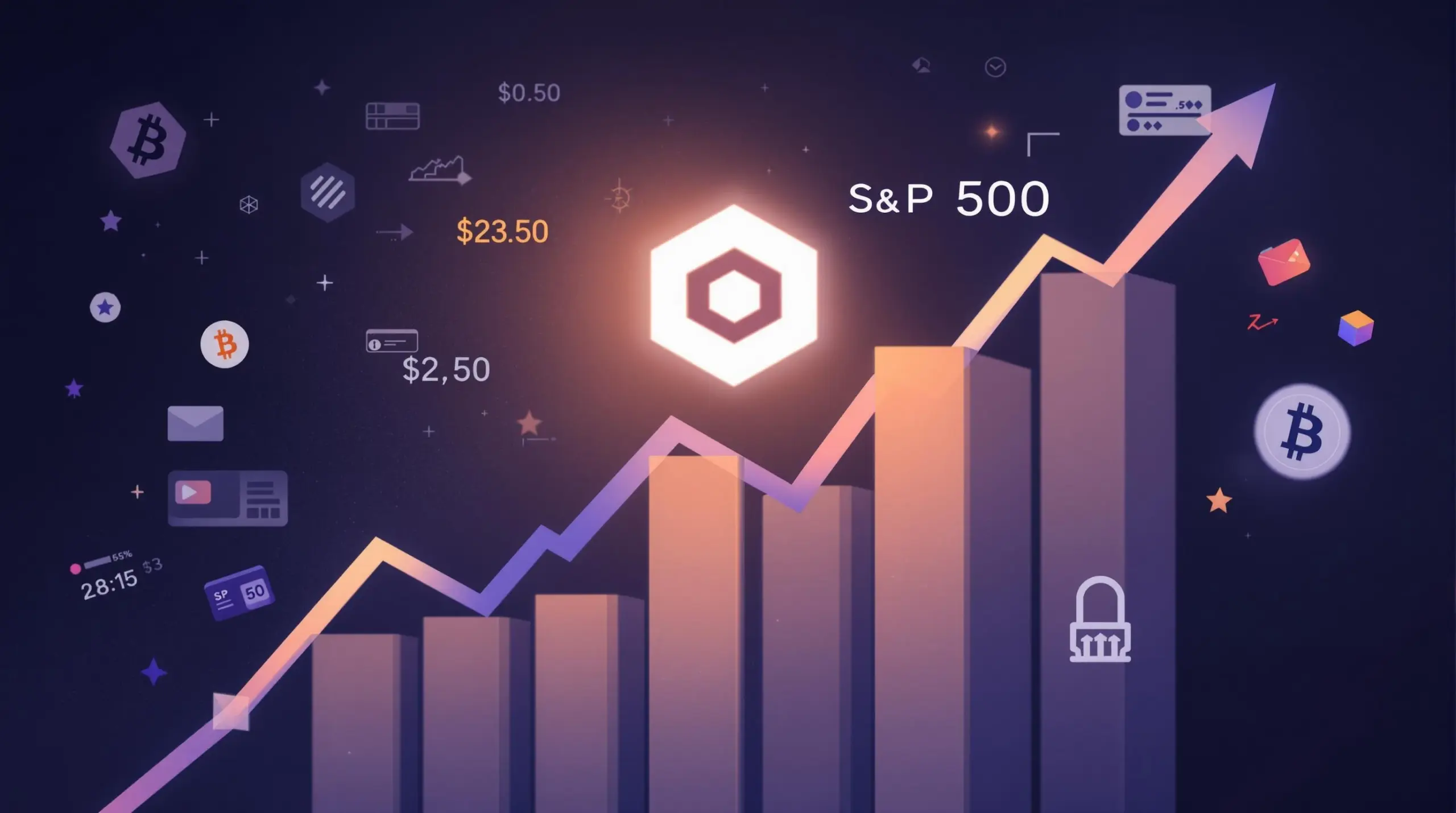BitcoinWorld

US Dollar Faces Crucial Uncertainty as Powell’s Words Loom
The financial world is abuzz, and for good reason. The mighty US Dollar, a cornerstone of global commerce and a significant influencer on everything from commodity prices to cryptocurrency valuations, finds itself in a precarious position. After a period of impressive strength, it now struggles to regain its poise, prompting widespread speculation among investors and analysts alike. Adding to this palpable anticipation is the looming presence of Federal Reserve Chairman Jerome Powell, whose upcoming speech is set to deliver critical insights, potentially reshaping the entire US Dollar outlook for the foreseeable future. For those tracking the volatile crypto markets, understanding the dollar’s trajectory is more than just academic; it’s a vital piece of the puzzle, often dictating the flow of capital and the appeal of alternative digital assets.
What’s Driving the US Dollar’s Recent Struggles?
The dollar’s recent performance has been anything but stable. After periods of impressive ascent, it now finds itself navigating choppy waters, struggling to regain its footing against major global currencies. Several interconnected factors contribute to this volatility and the shifting US Dollar outlook:
- Persistent Inflationary Pressures: While there are signs that inflation is cooling, its persistence above the Federal Reserve’s 2% target remains a concern. The market is constantly weighing whether the Fed’s past actions have been sufficient or if more tightening is required, creating uncertainty around the dollar’s value.
- Federal Reserve’s Policy Stance: The pace of interest rate hikes and, more recently, the discussion around potential rate cuts, significantly impacts the dollar. A perception that the Fed might be less aggressive than other central banks, or that it might cut rates sooner, can weaken the dollar’s appeal.
- Global Economic Slowdown Concerns: Fears of a recession in major economies, including the US, can lead to a ‘risk-off’ sentiment. While the dollar often acts as a safe-haven asset during crises, prolonged global economic weakness can erode confidence and dampen demand for dollar-denominated assets.
- Geopolitical Tensions: Ongoing conflicts and trade disputes introduce significant uncertainty into the global financial system. While initial shocks might send investors to the perceived safety of the dollar, prolonged instability can shift capital flows and influence currency valuations in unpredictable ways.
Jerome Powell’s Crucial Address: Decoding the Fed’s Next Moves
All eyes are on the upcoming Jerome Powell speech. As the Chairman of the Federal Reserve, his words carry immense weight, capable of moving global markets instantly. Investors, traders, and policymakers alike will be dissecting every nuance of his remarks for clues about the Fed’s future monetary policy path. What key insights might he offer, and what should market participants be listening for?
- Inflation Trajectory: Powell will likely provide an update on the Fed’s assessment of inflation. Will he reiterate the central bank’s unwavering commitment to the 2% target, or will he acknowledge the progress made in disinflation, potentially signaling a less aggressive stance?
- Labor Market Strength: The health of the US labor market is a critical factor in the Fed’s decision-making. Any signals on employment data, wage growth, or unemployment rates could influence future policy considerations.
- Monetary Policy Path: This is perhaps the most anticipated part of any Jerome Powell speech. Will he hint at further rate hikes, confirm a pause in the tightening cycle, or even open the door to potential rate cuts in the near future? The market will be looking for clarity on the ‘terminal rate’ – the peak interest rate in this cycle.
- Economic Projections: Updates on the Fed’s outlook for GDP growth, unemployment, and inflation forecasts will provide a broader picture of the central bank’s expectations for the economy.
Powell’s previous addresses have often provided clarity, but sometimes also introduced new uncertainties, leading to significant market reactions. His communication style and choice of words are meticulously scrutinized, as even subtle shifts can trigger major shifts in asset prices.
Unpacking Global Economic Trends and Their Influence
The dollar does not exist in a vacuum; its strength or weakness is heavily influenced by broader global economic trends. The interconnectedness of economies means that developments far from Washington D.C. can have a profound impact on the dollar’s valuation.
- China’s Economic Recovery: A robust and sustained recovery in China, the world’s second-largest economy, could boost global growth and demand for riskier assets, potentially weakening the dollar as capital flows away from safe havens. Conversely, any signs of weakness could strengthen the dollar.
- European Resilience and Energy Prices: The Eurozone’s economic performance, especially regarding its energy security and inflation trajectory, directly impacts the EUR/USD pair, which is the most traded currency pair globally. A stronger Euro tends to put downward pressure on the dollar.
- Commodity Price Fluctuations: Changes in the prices of key commodities like oil, gas, and agricultural products affect inflation globally and influence trade balances, indirectly impacting currency valuations. Higher commodity prices can lead to inflationary pressures, which central banks respond to with policy adjustments.
- Geopolitical Landscape: Ongoing conflicts, trade disputes, and political instability across the globe create uncertainty. While the dollar often benefits from safe-haven flows during initial shocks, prolonged geopolitical tensions can erode long-term confidence and shift capital flows away from traditional safe assets.
| Economic Indicator | Impact on US Dollar | Current Trend/Significance |
|---|---|---|
| Inflation Rate (CPI/PCE) | Higher inflation can lead to aggressive rate hikes, strengthening the dollar. However, persistent high inflation without adequate Fed action can weaken confidence. | Moderating, but still elevated above target. Fed closely watches core PCE. |
| Employment Data (NFP, Unemployment Rate) | Strong job growth and low unemployment indicate a healthy economy, supporting the dollar by signaling continued economic strength. | Robust, but showing early signs of cooling from peak levels. |
| Gross Domestic Product (GDP) Growth | Strong economic growth attracts foreign investment, increasing demand for the dollar. | Slowing from post-pandemic highs, but has so far avoided a technical recession. |
| Interest Rate Differentials | Higher US interest rates relative to other major economies make dollar-denominated assets more attractive, drawing in capital and strengthening the dollar. | Still favorable for the US compared to many developed nations, but narrowing as other central banks catch up. |
The Ripple Effect of Interest Rate Policy: The Fed’s Potent Lever on Dollar Strength
The Federal Reserve’s interest rate policy is arguably the single most impactful factor on the dollar’s valuation. When the Fed raises rates, it makes dollar-denominated assets, such as US Treasury bonds, more attractive to global investors seeking higher returns. This increased demand for dollar assets translates into a stronger currency. Conversely, expectations of rate cuts, or a ‘dovish’ stance, can lead to dollar depreciation as capital flows out in search of better yields elsewhere.
- Quantitative Tightening (QT): Beyond just rate hikes, the Fed’s balance sheet reduction, known as quantitative tightening, also plays a role. By allowing bonds to mature without reinvesting the proceeds, the Fed effectively drains liquidity from the financial system, which can indirectly support the dollar by making it scarcer.
- Future Projections and ‘Dot Plots’: The market is constantly trying to front-run the Fed’s next moves. The Federal Open Market Committee’s (FOMC) ‘dot plot,’ which indicates individual members’ projections for future interest rates, is meticulously analyzed for clues about the likely path of monetary policy.
- Global Synchronicity: The dollar’s strength is also relative. How other major central banks – such as the European Central Bank (ECB), the Bank of Japan (BoJ), and the Bank of England (BoE) – adjust their own interest rate policy influences the relative strength of the dollar against their respective currencies. If other central banks become more hawkish, the dollar’s yield advantage might diminish.
Navigating the Forex Market: Strategies Amid Volatility
For traders, investors, and businesses with international exposure, understanding the dynamics of the Forex market analysis is paramount. The current environment, characterized by dollar struggles and central bank uncertainty, demands careful consideration and adaptive strategies.
- Hedging Strategies: Businesses engaged in international trade often use forex derivatives to mitigate currency risk. This involves locking in an exchange rate for future transactions, protecting against adverse currency movements.
- Carry Trades: While potentially profitable, carry trades – borrowing in a low-interest-rate currency and investing in a high-interest-rate currency – become riskier in volatile periods. Sudden shifts in interest rate policy or risk sentiment can quickly unwind these positions.
- Technical vs. Fundamental Analysis: A blend of both approaches is crucial. Fundamental analysis helps market participants understand the ‘why’ behind currency movements (e.g., economic data, central bank policy), while technical analysis provides insights into potential entry and exit points based on price patterns and indicators.
- Risk Management: In a volatile forex market, robust risk management is non-negotiable. This includes appropriate position sizing, setting stop-loss orders to limit potential losses, and avoiding excessive leverage.
- Diversification: Considering alternative assets, including cryptocurrencies, as part of a diversified portfolio can be a strategy to hedge against traditional currency fluctuations. However, it is vital to remember that cryptocurrencies carry their own unique set of risks and volatility.
- Staying Informed: Continuously monitoring economic calendars, central bank communications, and geopolitical developments is critical for making informed decisions in the fast-moving forex market.
Challenges and Opportunities in a Shifting Landscape
The current state of the US Dollar outlook presents both significant challenges and unique opportunities for market participants.
Challenges:
- Sticky Inflation: If inflation proves more persistent than anticipated, it could force the Fed into more aggressive tightening, potentially triggering a deeper economic slowdown.
- Recessionary Pressures: The risk of a global or domestic recession remains. A severe downturn could lead to widespread deleveraging and unpredictable currency movements.
- Geopolitical Instability: Escalating conflicts or new geopolitical flashpoints could introduce extreme market volatility and sudden shifts in safe-haven demand.
- Policy Missteps: Any perceived missteps in interest rate policy or communication from major central banks could lead to market instability and erode confidence.
Opportunities:
- Currency Pair Diversification: Investors can explore diversification into other strong or undervalued currencies, leveraging Forex market analysis to identify potential opportunities.
- Arbitrage Opportunities: Volatility can create short-term arbitrage opportunities for sophisticated traders who can capitalize on price discrepancies across different markets.
- Strategic Hedging: For businesses, understanding the dollar’s trajectory allows for more effective strategic hedging, protecting profit margins and operational stability.
- Long-Term Positioning: For long-term investors, periods of dollar weakness might present opportunities to acquire dollar-denominated assets at more favorable exchange rates.
Conclusion: Navigating the Dollar’s Uncertain Path
The US Dollar’s outlook remains shrouded in a degree of uncertainty, underscoring the complex interplay of domestic policy and broader global economic trends. As the highly anticipated Jerome Powell speech approaches, market participants eagerly await signals that will shape not only the immediate trajectory of the dollar but also the future direction of interest rate policy and, by extension, the global financial landscape. Navigating the Forex market analysis in these uncertain times requires vigilance, adaptability, and a deep understanding of the forces at play. Whether the dollar regains its poise or continues its struggle, its trajectory will undeniably influence global finance, including the burgeoning cryptocurrency space, emphasizing the critical need for informed decision-making in an ever-evolving market.
To learn more about the latest Forex market trends, explore our article on key developments shaping the US Dollar and interest rates, and their impact on global liquidity.
This post US Dollar Faces Crucial Uncertainty as Powell’s Words Loom first appeared on BitcoinWorld and is written by Editorial Team





